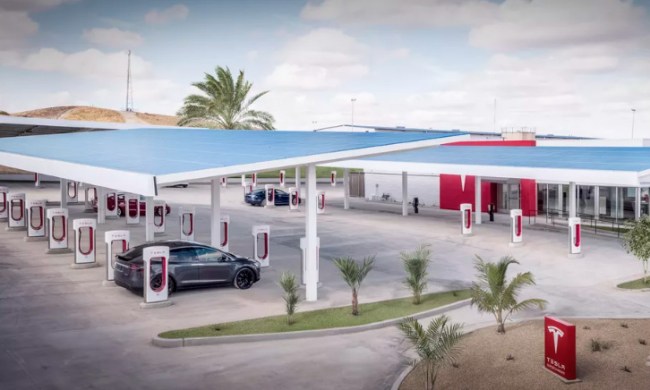The Tesla Supercharger network has already become widely popular with EV owners as other brands slowly adopt the popular “Tesla plug.” Honda and its luxury sub-brand Acura will soon join the list of automakers who electric vehicles can be charged at one of the 20,000+ Tesla Superchargers across North America.
Starting June this year, those who own a Honda Prologue or an Acura ZDX will be able to stop by at a Tesla Supercharger station and refuel their car batteries. Since those EVs use a CCS1 charging connector, Honda said owners of Prologue and ZDX EVs will need to buy separate adapters to connect Tesla Superchargers that use a North American Charging Standard (NACS) connector.

With this move, Honda joins the score of other automakers, including BMW, Ford, GM, Hyundai, Jaguar Land Rove, Lucid, Riving, and Volvo to have already partnered with Tesla to open access to its Supercharger network.
However, unlike brands such as Ford, Hyundai, or Rivian, which offered free adapters when they announced collaboration with Tesla, Honda says owners will have to buy these from a dealership. It added that the price of the adapter will be disclosed closer to its availability in June. Notably, Ford, which has since stopped offering free NACS adapters, now sells them for $200, which should give us a benchmark for what Honda may price theirs at.

Understandably, these adapters will only work at Tesla’s DC Superchargers and will not be compatible with destination chargers at home. You may, however, be lucky if the Tesla charging station near you has Magic Dock adapters installed, which means you can charge any EV with a CCS connector without buying a separate adapter. These are still somewhat rare compared, but you can find a station close to you on PlugShare, a platform to help you find EV chargers.
In addition to letting its EVs charge at Tesla stations, Honda has also agreed to switch to NACS chargers on its EVs, starting with the Honda 0 prototypes it showcased at CES 2025. Meanwhile, the Acura RSX 2026 is expected to be the first production model to be fitted with it.




